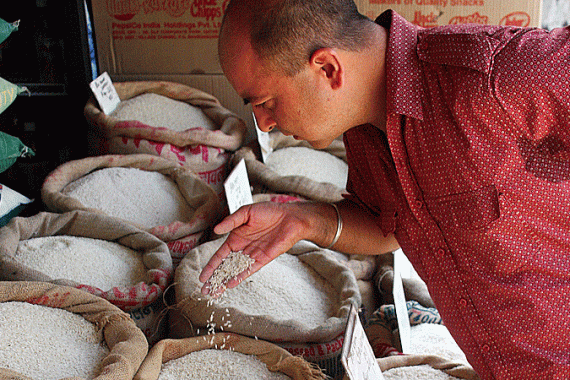India’s growth picks up speed
Economic data show 8.8 per cent expansion rate in June quarter, but inflation remains high.

 |
| The Reserve Bank of India has raised key interest rates four times this year in a bid to tame inflation [EPA] |
India’s economy has grown 8.8 per cent in the June quarter, its strongest performance in more than two years, official data show.
Figures from India’s Central Statistical Organisation released on Tuesday, also revealed an increase of 2.8 per cent in farm output, a 12.4 per cent growth in manufacturing, a 7.5 per cent increase in construction and an 8.9 per cent rise for mining.
Keep reading
list of 4 itemsWhy are nations racing to buy weapons?
Parallel economy: How Russia is defying the West’s boycott
US House approves aid package worth billions for Ukraine, Israel
Before the international financial crisis, India was averaging annual growth of nine per cent.
Speaking to Al Jazeera, Meghnad Desai, an economist and member of the UK’s upper house of parliament, said that “for the last five years India has been growing at a rate of five per cent on average, and now it is beginning to look like it may get to double digit very soon”.
Despite the encouraging statistics, economists say consumer demand remains narrow and that global economic uncertainty is constraining capital spending, which could disrupt industrial production and credit growth.
“In terms of sustainability, the growth number will settle around 8.5 per cent. There will be a deceleration,” Sachchidanand Shukla, an Enam Securities economist, told the Associated Press news agency.
“Global uncertainty has taken a toll. The most important factor is not interest rates or availability of funds. It’s got to do with confidence. Every two months, you’re seeing a spate of bad news.”
Inflation concerns
The rate of inflation is also a concern in India, with headline inflation during the April-to-June quarter at 10.6 per cent.
The country’s central bank has already raised key interest rates four times this year in a bid to tame high inflation.
India has been sheltered from the global economic crisis by strong domestic demand and rising wages. However, consumer spending has been restricted to the rich and middle class, who are spending heavily on cars, two-wheelers and plasma televisions.
“The big strength of India is the young population, and actually [the] 400,000,000 middle class people who have money to spend,” Desai said.
Basic consumer goods – like shampoo and soap, which India’s poor buy in small, super-cheap packets – have not seen a comparable jump in demand.
Headline inflation during the quarter was 10.6 per cent. That has hurt India’s poor the most, because they spend a greater slice of their income on food, which has seen the worst price rises.
Though India is far less dependent on exports than neighbours like China, some 40 per cent of industrial production is influenced by external factors, like commodity prices and export demand.
In addition, as Indian giants like the Tata group – now the UK’s largest manufacturing employer – and the Essar group start to demonstrate their global ambitions, they become more vulnerable to demand and credit conditions in the US and Europe.